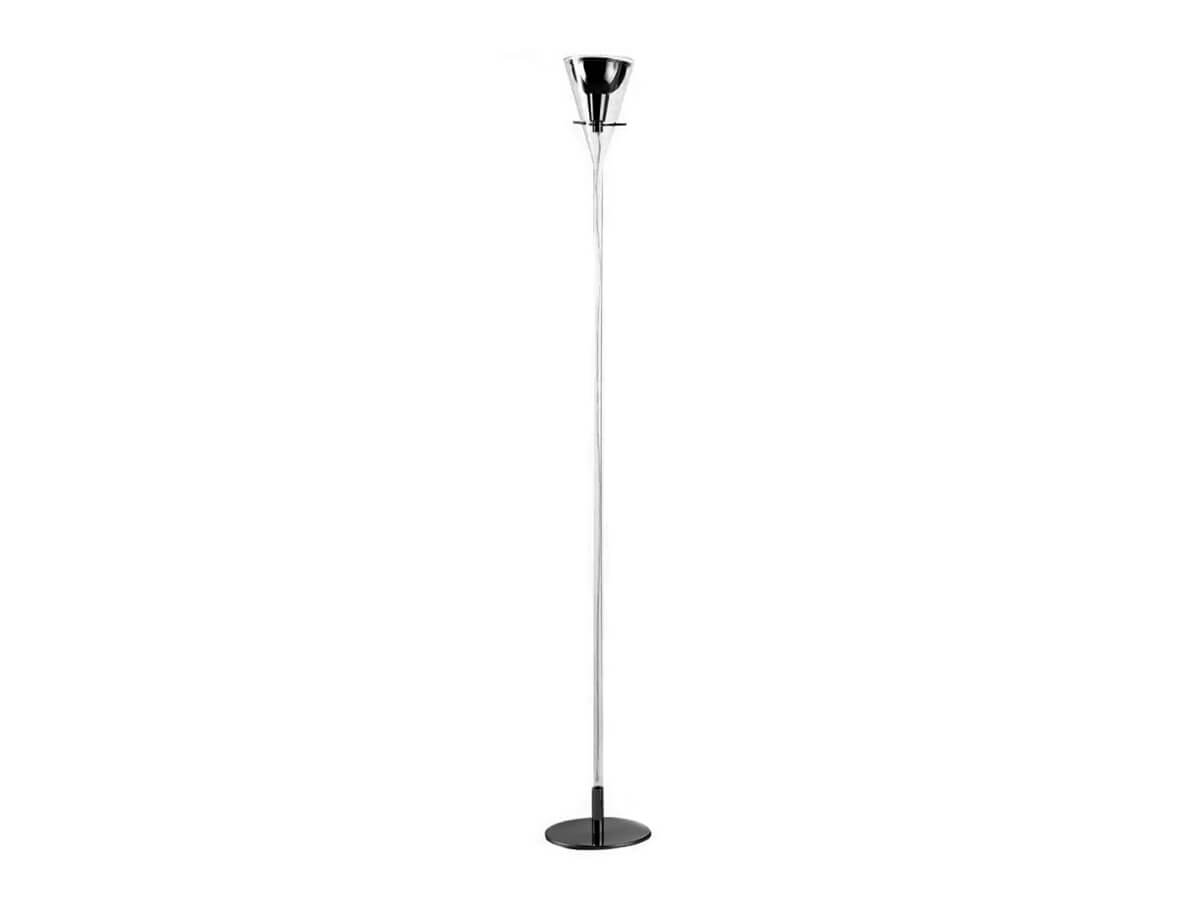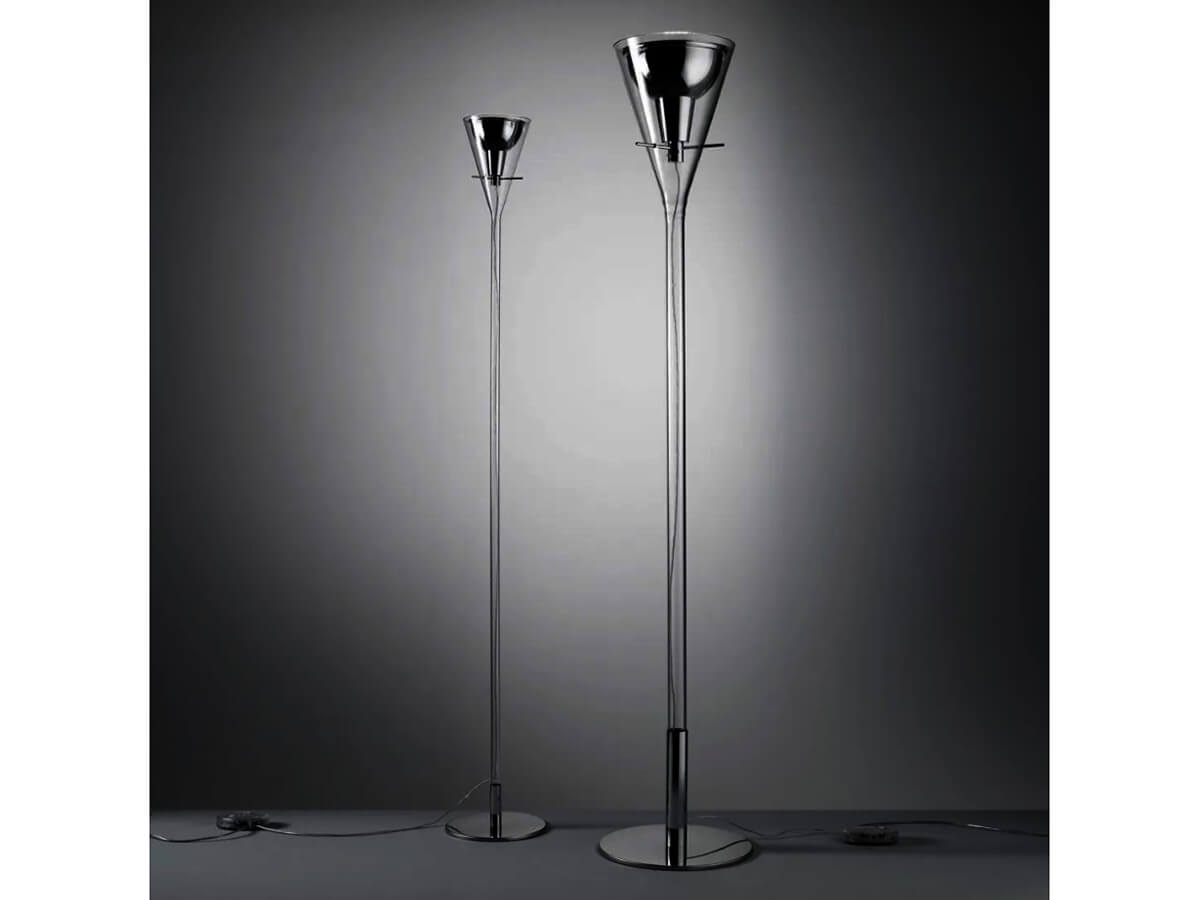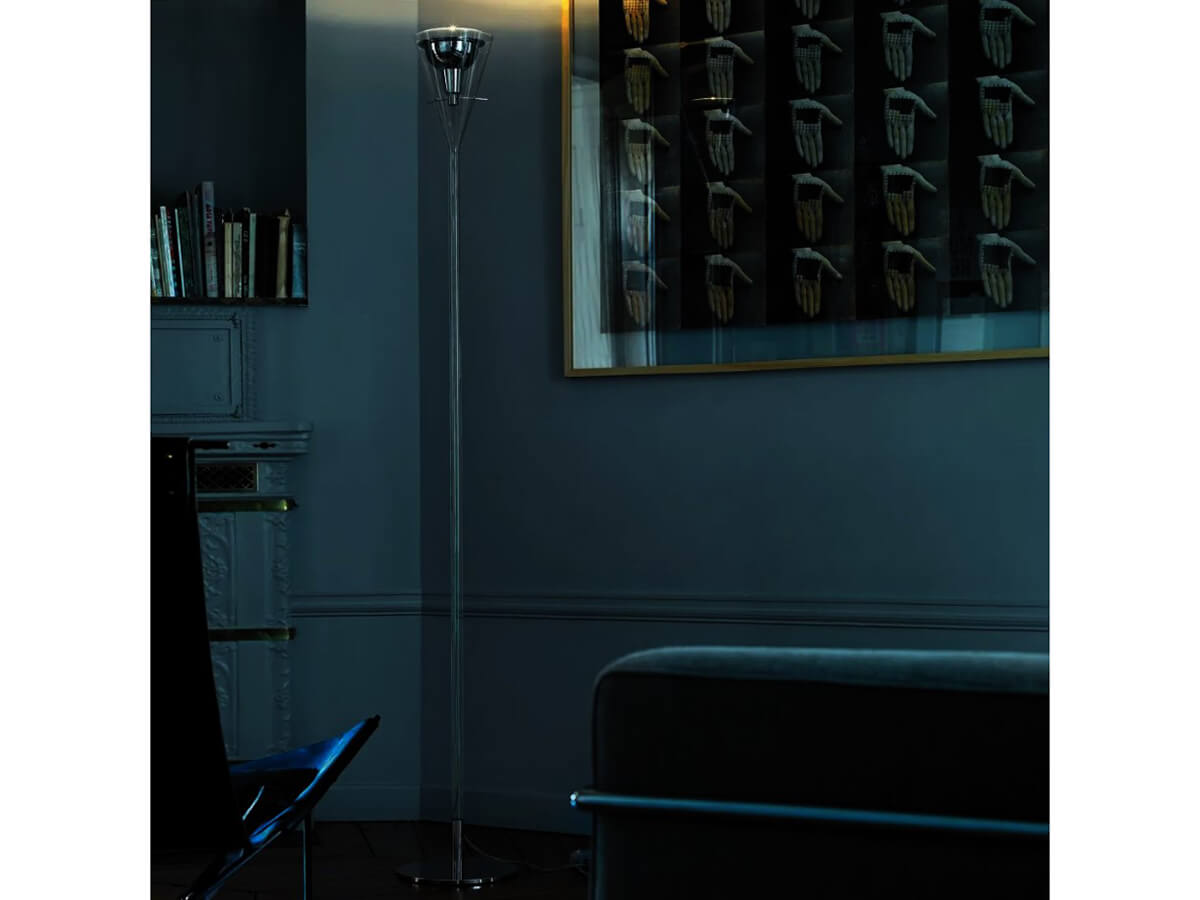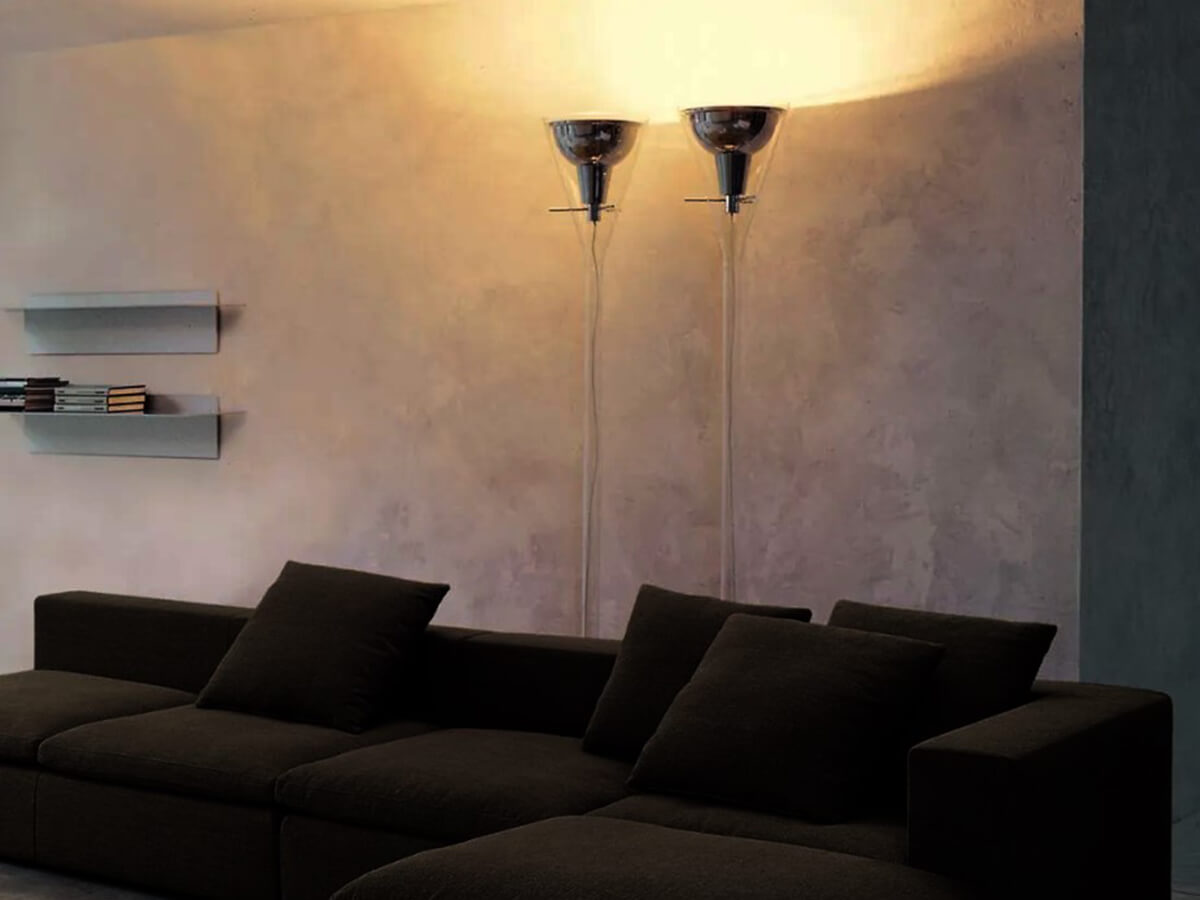Fontana Arte
Flûte Floor Lamp
Price starting from € 1.450,00*
*Price valid for the medium version in Ø 27 x H.192 cm with chromed metal base, stem in transparent glass and riflector in chromed aluminium - bulb excluded (cod. F330025150TCNE).
Designed by Franco Raggi in 1999, the Flute floor lamp by Fontana Arte is a clear reference to one of the company's great classics, the famous Luminator by Pietro Chiesa from 1932, whose basic concept is revised and updated with the addition of a witty play of transparencies. Like her model, Flute is also a lamp with indirect lighting, with the light source pointing towards the ceiling to make the light refract from there throughout the room, and like her, it has a long stem that opens slightly towards the top. in a thin cone - hence the name, as it resembles a glass of champagne. Flute, however, is a "stripped-down" Luminator: with the exception of the base, with its elegant chromed metal finish, its entire structure is transparent, allowing you to see the internal mechanism, that is the electric wire that runs along the entire stem and the metal cup that supports and hides the light source, vaulted fixed to the structure by three thin protruding metal rods.
Medium Version in Ø 27 x H.192 cm
Available also in Large version in Ø 32 x H.210 cm
Salvioni Design Solutions delivers all around the world. The assembly service is also available by our teams of specialized workers.
Each product is tailor-made for the personal taste and indications of the customer in a customized finish and that is why the production time may vary according to the chosen product.
To discover the full range of services available, visit our delivery page.
Personalize your request
Sizes
Select
Ø 27 x H.192 cm - Medium Version
Ø 32 x H.210 cm - Large Version
Ø 32 x H.210 cm - Large Version
Select
Select
One of the most influential representatives of the made in Italy lighting design, FontanaArte has its roots in the nineteenth century with the foundation of a glass factory in Milan by the entrepreneur Luigi Fontana. The real brand was born from the meeting between the latter and Giò Ponti, the first artistic director, leaving an indelible mark on the style of the company, so much that his creations still play a central role in the FontanaArte catalog. Glass and crystal gave the brand an immediate international success since the early years, thanks also to the collaboration with the master glassmaker Pietro Chiesa.Read more
Designed by
Franco Raggi
Franco Raggi (1945-) is an important Italian architect and designer. The beginning of his career, immediately after his studies at the Milan Polytechnic and the first years of apprenticeship at the Nizzoli studio, were characterized in particular by a fervent cultural activity, carried out both in the pages of trade magazines (he was editor of Casabella from 1971 to 1976 and editor-in-chief of Modo from 1977 to 1983) and in the exhibition and curating activities at important institutions, from the Venice Biennale to the Milan Triennale. It was from the 1980s that his activity in product design became more intense, concentrated in particular on the product typology of lamps: emblematic in this sense is the long collaboration with FontanaArte, which began at the beginning of the decade at the invitation of Gae Aulenti, the brand's art director at the time, and continued over the years with great successes such as the Flûte series (1999). Other lighting brands he has collaborated with over the years include Luceplan (for which he co-designed the On Off lamp, part of the permanent collection of the MoMA in New York, together with Alberto Meda and Denis Santachiara), Barovier&Toso, Artemide and more recently Firmamento Milano, founded by the former owner of FontanaArte Carlo Guglielmi, while in the furniture sector, he designed furniture for Poltronova and Zeus-Noto. Starting in the 1990s, his architectural projects began to increase in size, leading him to design, among other things, the interiors of the Humanitas hospital (1996), the headquarters of the Gianfranco Ferré Foundation (1998) and the headquarters of the Techint group (2000), all located in Milan.Read more




